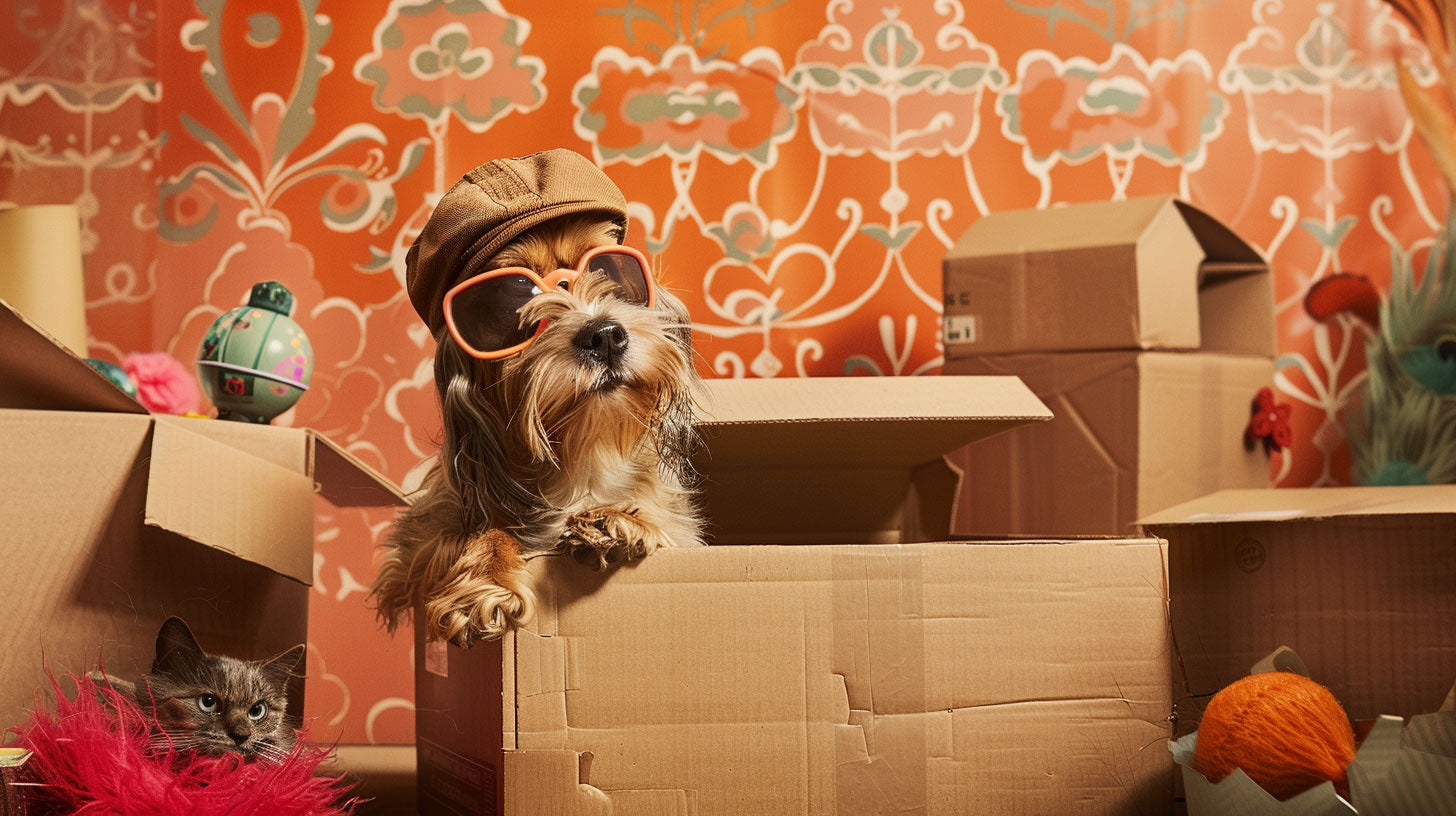Moving to a new home ranks as one of life's most stressful events, not just for humans but for our pets as well. Imagine, from their perspective, the familiar environment where they felt safe and secure suddenly transforms into an unknown territory filled with strange scents, sights, and sounds. This upheaval can lead to anxiety and stress-induced behaviors, notably accidents, even among the most well-trained dogs and fastidiously clean cats. This guide is dedicated to navigating this tumultuous period with your furry companions, emphasizing the strategic use of pee pads to mitigate accidents and provide comfort during the transition.
Understanding Pet Stress During Moves
The stress pets experience during a move isn't merely about a change in location; it's about a change in their entire world. Dogs and cats thrive on routine and familiarity, both of which are disrupted during a move. Symptoms of stress in dogs may include increased vocalization, unexpected chewing or destructive behavior, and a regression in house training. Cats may exhibit stress through increased hiding, changes in eating habits, or avoidance of the litter box, leading to accidents in unwanted places.
These behaviors aren't acts of rebellion but cries for comfort and stability amidst chaos. Recognizing these signs is pivotal in implementing strategies that ease their anxiety and support their adjustment to a new environment.

Pre-Move Preparation
The foundation for a smooth transition begins well before moving day. Gradual introduction to moving boxes, tape, and other packing materials can help desensitize pets to the coming changes. Maintain their regular routines as much as possible, including feeding times, walks, and play sessions, to provide a sense of normalcy.
For dogs, short, positive interactions with the packed boxes and suitcases can help reduce fear or anxiety associated with these objects. For cats, creating a sanctuary room that remains unchanged until the last possible moment can provide a safe haven from the chaos of packing.
Using Pee Pads Strategically
Pee pads can be an invaluable tool during the moving process, serving as a familiar and safe place for pets to relieve themselves. For dogs, introduce pee pads as a part of their routine prior to the move, placing them in an easily accessible area and using commands to encourage their use. This can be particularly useful for puppies or older dogs who may struggle with longer waits between bathroom breaks.
Cats, although typically more discreet with their bathroom habits, may also benefit from pee pads placed under or around litter boxes in the new home. This is especially useful if the move disrupts their litter box routine or if they become hesitant to use their box in a new location.
When selecting pee pads, look for options with built-in attractants, high absorbency, and odor control to encourage use and maintain cleanliness in the home. Buddy's Best makes these types of high-absorbency pee-pads.

Creating Comfort Zones
Upon arrival in the new home, immediately establish comfort zones for your pets. These areas should be filled with familiar items—beds, toys, blankets—and located in quiet, low-traffic areas to provide a refuge from the hustle and bustle of unpacking and settling in.
For dogs, these comfort zones can serve as a designated spot for their pee pads, water bowls, and toys. For cats, in addition to pee pads and litter boxes, consider adding scratching posts and perches near windows to encourage exploration and provide a sense of security as they adjust to their new surroundings.
Post-Move Adjustment
The adjustment period following a move is critical for pets. Gradually introduce them to different areas of the new home, allowing them to explore at their own pace. Maintain a consistent routine to help them establish a sense of normalcy in their new environment.
For both dogs and cats, patience and positive reinforcement are key. Reward them for using pee pads correctly and for exploring new spaces confidently. Be vigilant for signs of ongoing stress or anxiety, and consider consulting a veterinarian or animal behaviorist if these behaviors persist.

Conclusion
Moving with pets presents unique challenges but also opportunities for growth and bonding. By understanding your pets' needs, maintaining routines, and utilizing tools like pee pads strategically, you can help them navigate the transition with greater ease and comfort. Remember, your pets look to you for cues on how to feel about their new environment. Approach the move with calmness and positivity, and your pets are more likely to follow suit, settling into their new home with confidence and security.


